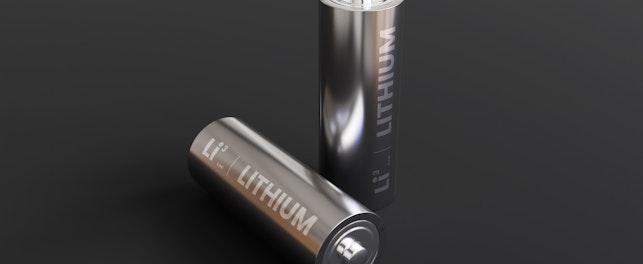CARB has recently published two revised guidelines to assist the composite wood products industry to comply with formaldehyde emission requirements falling under CARB and the US EPA Title VI Regulations. These guidance documents reflect the latest status in these two pieces of legislation.
In 2007-2008, the Airborne Toxic Control Measure (ATCM) to reduce formaldehyde emissions from composite wood products was approved by the California Air Resources Board (CARB) and the Office of Administrative Law (Safeguard 60/08). The formaldehyde emission standards in the ATCM were implemented in 2 phases. Phase 1 was implemented in January 2009 and Phase 2 during 2010-2012.
In July 2010, President Obama signed into law the Formaldehyde Standards for Composite Wood Products Act (the Act, Safeguard 127/10). This landmark piece of legislation amended the Toxic Substances Control Act (TSCA) and directed the US Environmental Protection Agency (EPA) to develop regulations to implement the Act. The formaldehyde emission standards are identical to those in Phase 2 of the ATCM to control formaldehyde emissions under CARB.
In December 2016, the US EPA published a Final Rule to implement the Act (Safeguard 5/17). The compliance date for emission standards, as amended, was June, 2018 (Safeguard 47/18). After March 2019, regulated products manufactured in or imported into the US must be certified by a fully accredited EPA TSCA Title VI Third Party Certifier (TPC) and labeled as TSCA Title VI compliant.
Both CARB and EPA have provisions relating to, inter alia, formaldehyde emission standards for hardwood plywood-composite core (HWPW-CC), hardwood plywood-veneer core (HWPW-VC), particleboards (PBs) and medium-density fiberboards (MDFs), economic operators (panel manufacturers, fabricators, distributors, importers and retailers), third-party certification programs, incentives for products manufactured from ultra-low emitting formaldehyde resins (ULEF) and no added-formaldehyde-based resins (NAF), product labeling and Third-Party Certifiers (TPCs). EPA also has provisions for Accreditation Bodies (ABs).
On May 16, 2019, CARB announced two revised guidelines to better assist the composite wood products industry to comply with CARB and EPA. These are:
- Status of US EPA Formaldehyde Regulation and a Comparison with CARB Regulation (Updated May 16, 2019)
- Comparison of Key Requirements of CARB and US EPA TSCA Title VI Regulations to Reduce Formaldehyde Emissions from Composite Wood Products (Revised May 2019)
According to the former guidance document, the ATCM remains in full effect. CARB is continuing to enforce the ATCM and will accept composite wood panels and finished goods that comply with the TSCA Title VI regulation and are labeled as TSCA Title VI compliant. The latter guideline provides a comparison table on key requirements between CARB and EPA.
It is important to note that both guidelines indicate that in the event of a difference between CARB and EPA requirements, the more stringent requirement applies to composite wood panels and finished goods for California.
Highlights of a comparison of certain key requirements between CARB and EPA are summarized in Table 1.
| California health and Safety Code (Title 17, Sections 93210-93210.12) | Federal Toxic Substances Control Act 15.U.S.C, Sec. 2697 (TSCA Title VI) | |
|---|---|---|
| Scope | HWPW-CC, HWPW-VC, PBs and MDFs (including thin-MDFs) | |
| Effective Date | Phase 2 emission standards became effective during 2010-2012 |
|
| Record keeping | Two years | More stringent than CARB: Three years |
| Panel manufacturers | Verification of compliance with Phase 2 formaldehyde emission standards by a CARB-approved TPC Note: If CARB requirements are more stringent than those required by TSCA Title VI, CARB requirements must be followed for panels to be legally sold or used to manufacture finished goods for California
| Verification of compliance with formaldehyde emission standards by an EPA-recognized TPC Note: Compliance with CARB’s more stringent requirements does not invalidate the TSCA Title VI certification issued by an EPA-recognized TPC |
| Product labeling | Panels (or bundles of panels) and finished goods (or boxes containing finished goods) are to be labeled as compliant with CARB’s Phase 2 formaldehyde emission standards Note: Panels and finished goods labelled as TCSA Title VI compliant are assumed to meet all CARB requirements, including those that are more stringent than TSCA Title VI
| After March 22, 2019, regulated composite wood panels and finished goods must be labeled as TSCA Title VI compliant |
| Identification of unlabeled panels and finished goods | When bundles of panels or boxes of multiple finished goods are labeled, individual panels and finished goods are not required to be labeled | More stringent than CARB: Requires method, such as color-coded edge marking, to identify supplier of each compliant panel and finished good |
| De minimis labeling requirement | More stringent than US EPA: Finished goods must be labeled as containing Phase 2 compliant composite wood materials | Finished goods with a surface area of less than 144 square inches, based on the surface area of the largest face (e.g. small photo frame), are exempt |
| Fabricators of wood-veneered laminated products | Requires the use of CARB Phase 2 compliant platform (core) materials | Requires the use of TSCA Title VI compliant platform (core) materials
More stringent than CARB: From March 22, 2024, these fabricators (laminated product producers) must comply with the requirements for HWPW panel manufacturers, including third party certification programs |
| Third-Party Certification | TPCs must be approved by CARB | After March 22, 2019, TPCs must be accredited by an EPA-approved accreditation body (AB) |
Panel Manufacturers: Quality control (QC) testing and QC test methods | HWPW: More stringent than EPA: Panel manufacturers making less than 200,000 square feet per week of HWPW must conduct at least 1 QC emission test per week of production for each product type and product line | HWPW:
|
| Import Certification | Not required | More stringent than CARB: From March 22, 2019, import certification through the US Customs and Border Protection’s (CBP) Automated Commercial Environment will be required for all imported regulated products |
Table 1.
SGS is committed to providing information about development in regulations for consumer products as complimentary services. Through a global network of laboratories, SGS provides a wide range of services including physical/mechanical testing, analytical testing and consultancy work for technical and non-technical parameters applicable to a comprehensive range of consumer products. Please do not hesitate to contact us for further information.
For enquiries, please contact:
Hingwo Tsang
Global Information and Innovation Manager
t: +(852) 2774 7420
Stay on top of regulatory changes within your industry: subscribe to SafeGuardS!
Read more articles for the Consumer Goods and Retail industry
© SGS Group Management SA - 2019 - All rights reserved - SGS is a registered trademark of SGS Group Management SA. This is a publication of SGS, except for 3rd parties’ contents submitted or licensed for use by SGS. SGS neither endorses nor disapproves said 3rd parties contents. This publication is intended to provide technical information and shall not be considered an exhaustive treatment of any subject treated. It is strictly educational and does not replace any legal requirements or applicable regulations. It is not intended to constitute consulting or professional advice. The information contained herein is provided “as is” and SGS does not warrant that it will be error-free or will meet any particular criteria of performance or quality. Do not quote or refer any information herein without SGS’s prior written consent.



